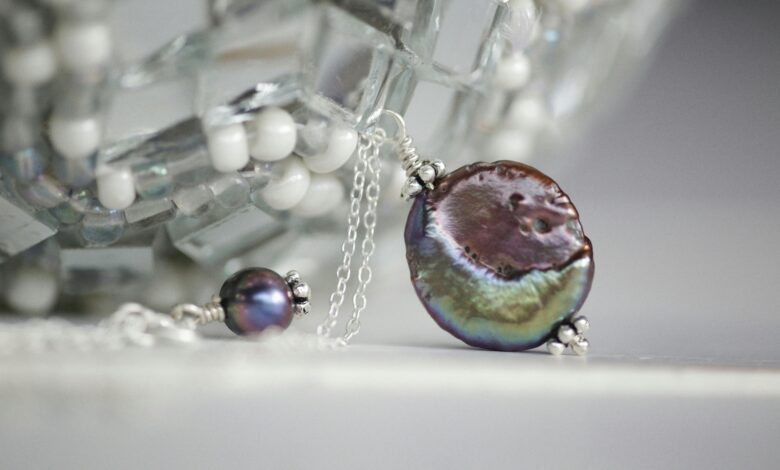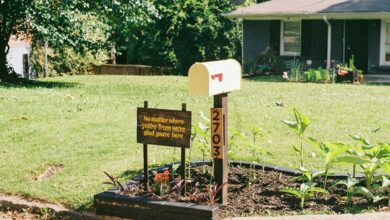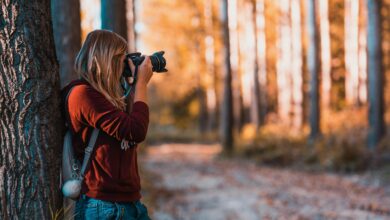Highlights of Nummazaki

Introduction
Imagine a place where the roar of the ocean meets the stillness of age-old forests; where tradition sits beside quiet beaches; where seafood tastes fresh like the salt in the air and festivals fill the night with firelight and joy. That place, for many who have heard of it, is Nummazaki. Though not as famous as Tokyo, Kyoto, or even the well-trodden coasts of Hokkaido, Nummazaki has begun to capture hearts for those who want something off the beaten path.
I first stumbled across Nummazaki while reading a travel blog that praised its lighthouses and seaside cliffs. There was a photo of a lone lighthouse at sunset, white and stark against a purple sky. The blogger wrote about how few foreigners visited, about sea caves hidden by tides, about food stalls with grilled fish that seemed to melt on the tongue. I was entranced. I wanted to map it, to imagine going there, to taste that food, to sit by that lighthouse while waves crashed.
In this article, I want to share what I found: the highlights of Nummazaki. Some details are drawn from traveler reports, local sources, and travel blogs. Others are general features that seem consistent across multiple write-ups. I will also point out where things are less certain. My aim is to help you understand what makes Nummazaki special — whether you are thinking of visiting someday, or simply curious about hidden corners of the world.
Overview & Where Nummazaki Is
Nummazaki appears in multiple sources as a coastal town in Japan, often associated with the island region of Shikoku, or somewhere along a coastline with cliffs, sea views, and forests. The exact administrative prefecture or local name sometimes differs between accounts — because Nummazaki is less documented in mainstream travel guidebooks than major cities.
Geographically, Nummazaki seems to lie where land meets sea, with rugged coastline, limestone or rocky cliffs, coves, beaches, and sea caves. Behind the coast, there are forested hills, possibly mountainous terrain, walking trails, viewpoints. The climate likely resembles much of coastal Japan: mild winters, warm summers, seasonal rainfall, possibly typhoon influence depending on latitude.
Part of the charm of Nummazaki is its remoteness or relative quietness. It is not stuffed with high-rise hotels or crowded tourist circuits, but shows a blend of nature, culture, and simplicity. Many travel write-ups talk about being able to find secluded beaches, stillness, the sound of waves and wind more than traffic.
Natural Beauty & Scenic Spots
One of the biggest draws to Nummazaki is its natural landscapes. If you love scenery — coastlines, cliffs, water, sea caves, forests — this is a place to dream about.
Beaches & Secluded Coves
The town has several beaches — some larger public ones, others very small, tucked into coves. One of the sources mentions Shirahama Beach, a white-sand public beach with calm waters. Quiet coves like Futamigaura or Uminohoshi are described in some reports. These smaller beaches are often reached via narrow coastal paths, which add to their charm because they require a little effort to get to. That effort is rewarded: fewer crowds, clear water, tidepools, little hiding places.
Cliffs, Sea Caves & Rock Formations
The dramatic coastal formations are frequently mentioned. Rugged limestone cliffs rise above the sea, shaped by wind and waves into dramatic shapes. One site describes “Tategami Rock,” resembling a dragon’s spine. Tech Imaging Another formation is Meoto Arch, a natural rock arch framing the sea. These offer great photographic opportunities, especially at sunrise or sunset when light and shadow play across surfaces. Sea caves are also part of the landscape: caves carved by the ocean, accessible by foot at low tide or via small boat tours in calm weather. Exploring them is among the more adventurous highlights.
Forest Trails, Views & Seasonality
Behind the coastal belt, green hills and forests beckon. Trails wind through woods, mossy paths, under canopy of trees. These trails often lead to elevated viewpoints from which the coastline spreads out below, with ocean, cliffs, islands, maybe fishing boats in the distance. Seasonal change matters: spring brings blossoms; autumn brings colored leaves; summer offers lush growth; winter may bring clearer skies and calmer air (if weather allows). Many travelers mention that Nummazaki feels different in each season. For nature lovers, watching this change over time is part of the magic.
Part 2
Historical & Cultural Highlights
While Nummazaki’s natural beauty is central, its history and culture give depth and meaning to that beauty.
Lighthouse & Maritime Heritage
One of the recurring symbols is the Nummazaki Lighthouse (in some sources) — a historic lighthouse built to guide fishing vessels and ships along the rocky sea routes. It stands as both a functional structure and a visual landmark. Walking to the lighthouse offers panoramic views, especially at dusk or sunrise. It also connects you to the sea’s power: storms, tides, ships, fishermen.
Old Stone Buildings, Archaeology & Architecture
Some write-ups mention that Nummazaki has old stone or wooden buildings — perhaps small museums or cafes in preserved structures. There is also mention of archaeological findings: artifacts from ancient periods (Jomon period in Japan) discovered nearby, showing that the human story here is long, layered. These relics, though they may be few, add to the sense that Nummazaki is more than scenery — it is memory, culture, storytelling.
Festivals, Folk Traditions, Local Crafts
Cultural life in Nummazaki is often described as alive in festivals. Seasonal festivals, perhaps tied to fishing, harvest, or sea life, include processions, lanterns, music, dancing, traditional costumes. Local crafts are also a highlight: pottery, weaving, wooden art, possibly traditional textile work. These crafts reflect centuries of local skill; they are tangible expressions of heritage.
Cuisine & Local Food
Any visit to Nummazaki would be incomplete without tasting its local food. The cuisine here ties closely to sea, land, and seasons.
Fresh Seafood & Regional Dishes
Given its coastal position, seafood is central: grilled fish, sashimi (if available), seafood bowls, perhaps sea urchin or shellfish. The quality is often described as fresh — often caught the same day. Some local restaurants are small and family-run, focusing on simple recipes that let natural flavor shine.
Local Markets, Street Food & Desserts
Local markets are places to find variety: fresh produce, snacks, baked items. Street food vendors may offer quick bites: skewered seafood, tempura of local vegetables, roasted sweet potatoes (Yaki Imo), possibly sweets made with rice flour etc. Something memorable from one write-up is the aroma of roasted sweet potatoes, smoky and sweet, carried by seaside air.
Desserts and drinks also play a role. Traditional sweets (wagashi style), maybe local tea or sake (if breweries exist) are mentioned. Sampling local sake or regional fermented drinks often features in travel reports.
Things to Do & Hidden Gems
If you want to go beyond just scenic photo spots, Nummazaki offers a lot of possible experiences.
-
Snorkeling / water activities: Clear waters near secluded beaches or coves make snorkeling or kayaking attractive when weather is good. Marine life, tide pooling, exploring small sea creatures in shallow pools are favorite pastimes.
-
Hiking & Trails: Trails behind the town or hills offer both moderate hikes and easier walks. Reaching vantage points to see the coast, cliffs, sunsets, perhaps even views of islands (if nearby).
-
Interaction with locals: staying in guesthouses or homestays gives chances to learn cooking, crafts, fishing traditions. Sometimes workshops or small artisan shops open their doors to visitors.
-
Photography & Mindful Rest: For many, Nummazaki is a place to slow down — watch sunrise/sunset, meditate by the sea, walk quietly, take photos without crowds. Hidden walks, forest paths, tide pools, or small islands (if nearby) are perfect for this.
Part 3
Best Time to Visit & Travel Tips
To fully enjoy Nummazaki’s highlights, timing, planning, and respect matter.
Seasons & When to Go
-
Spring: Flowering trees, mild weather, fewer mosquitos. Great time for hiking and coastal views.
-
Summer: Warmest time, best for swimming, snorkel, water sports. But possibly more people, hotter days. Watch out for strong sun or storms.
-
Autumn: Cooler temperatures, colorful leaves, storms are less frequent, scenic beauty at its peak.
-
Winter: If coastal and high elevation, might bring cold or storms; but also clearer skies, crisp air. Some attractions might be less accessible depending on weather.
Lodging & Stay Options
-
Guesthouses / homestays: good value, closer contact with locals, more authentic feeling.
-
Traditional ryokan: if available, for those who want Japanese style lodging (tatami mats, futon, traditional meals).
-
Boutique inns or small hotels: more comfort, likely modern amenities.
-
Camping: for adventurers who want to be closer to nature; may require preparedness for changing weather.
Booking ahead helps during festival seasons and holidays. Some lodging may be limited.
Transport & What to Pack
-
Getting there: likely combination of train + bus or driving; remote areas may require rental car or local transit. Research local schedules.
-
Pack layers: coastal winds, changes in weather. Rain gear is useful in Japan in many regions. Sun protection (hat, sunscreen). Good walking shoes.
-
Language: English may be limited in smaller towns; basic Japanese phrases help. Politeness is appreciated.
-
Respect local customs: festivals, shrines, quiet hours, litter rules, etc.
Part 4
Why Nummazaki Matters
What makes Nummazaki more than just pretty landscapes is the balance of natural beauty, culture, tranquility, and human warmth. It offers something many busy destinations do not: space to breathe, time to reflect, a slower pace, connections with tradition and nature.
For travelers, it’s a place where you can learn — about local craftsmanship, about food, about sea, about how people live in harmony with environment. For those seeking escape, it provides solitude without complete isolation: small towns, minimal crowds, safe atmosphere. For nature lovers, biodiversity, sea, forest, cliffs, wildlife are rewards.
Visiting places like Nummazaki also helps preserve them: when done respectfully, tourism can support local crafts, local economy, and strengthen tradition. When travelers value authenticity, it encourages maintenance of heritage, environmental protection, and cultural pride.
Conclusion
Nummazaki might not yet be on every traveler’s radar, but its highlights show it deserves to be. From its dramatic cliff-lined coasts and secret coves to its rich cultural history, vibrant festivals, fresh food, and quiet ways of being, Nummazaki offers a blend of experiences that feel both alive and grounded. It is a place to see and feel, not just photograph.
If you ever get the chance, go with open eyes and patient pace: linger at the beach at sunrise, taste local seafood, hike a trail behind a forest hill, listen to local stories, and stay in a traditional lodging under the stars. Those are the moments that turn visits into memories.
FAQ
-
Where exactly is Nummazaki located?
Based on multiple sources, it is a coastal town in Japan, likely in the Shikoku region or part of coastal prefectures, featuring cliffs, beaches, forests etc. The exact prefecture may vary in different descriptions, as Nummazaki seems to be less documented in major guidebooks. -
How many days should I stay in Nummazaki?
For first-time visitors, 2-3 full days is good: one day for coastal scenery and beaches, one for nature trails and forest hikes, another for culture, crafts, food, local experience. More time gives space to relax and discover hidden gems. -
Is Nummazaki easy to reach?
Probably moderate difficulty. Because it is less known, transport may include local buses or smaller roads. You will likely need to plan ahead whether by car, train + bus, or other regional transit. During festivals or peak seasons, access can be more crowded or limited. -
Are there English-friendly services there?
In major hotels or inns, likely some English is spoken. But in small towns, guesthouses, local restaurants, services may be more limited in English. Being polite, using simple Japanese phrases or translation apps helps. -
What foods should I try in Nummazaki?
Fresh seafood is a must. Also look for regional specialties: grilled fish, sashimi, seafood rice bowls, local sweets, sake or regional brewed drinks. Visiting markets or small restaurants will reveal hidden flavors.



